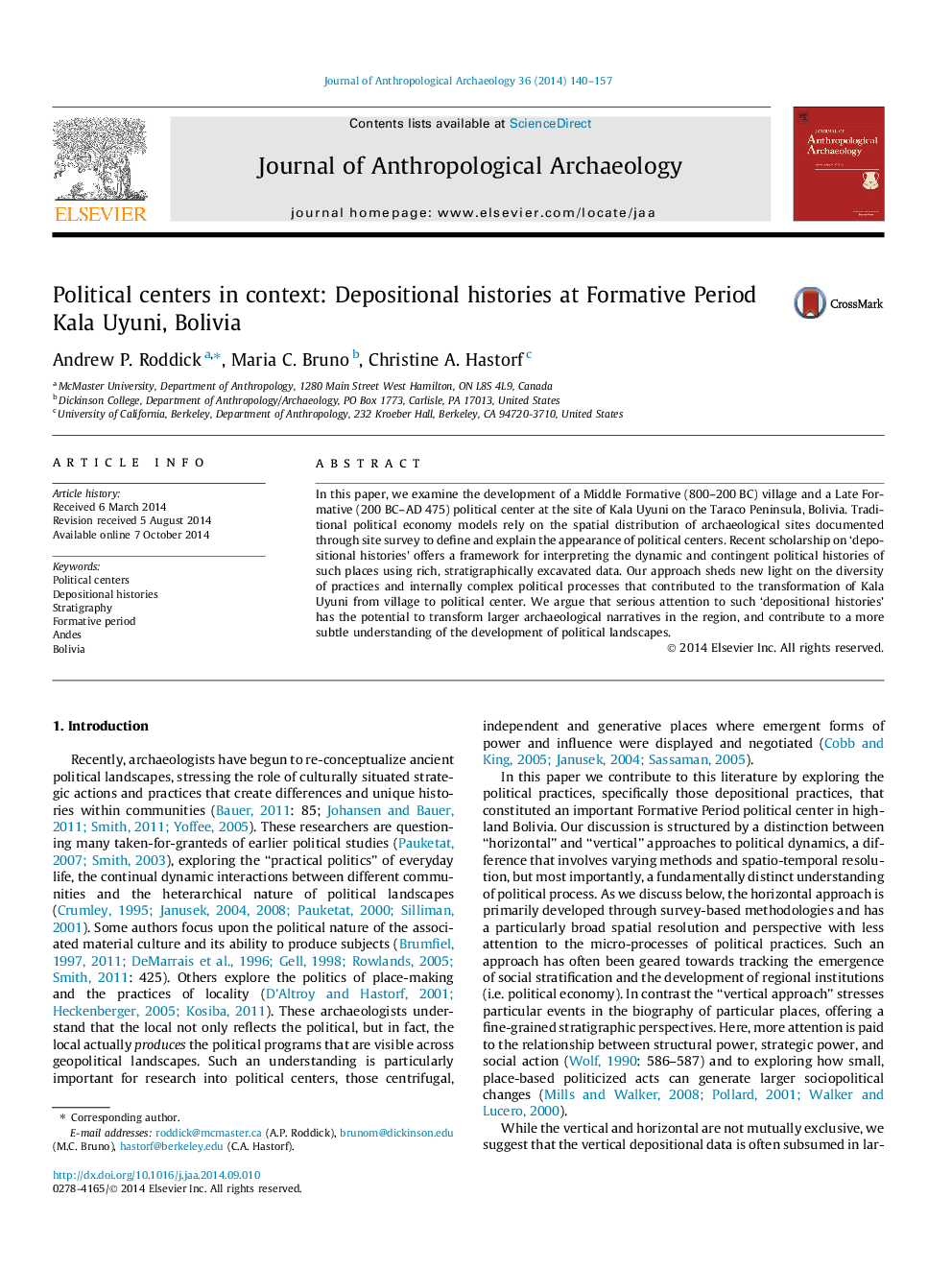| Article ID | Journal | Published Year | Pages | File Type |
|---|---|---|---|---|
| 1034936 | Journal of Anthropological Archaeology | 2014 | 18 Pages |
•We re-examine survey-based, political economic models of political centers in archaeology.•We explore political processes at political centers in the Titicaca Basin of the Andes through ‘depositional histories’.•Stratigraphic sequences at Kala Uyuni reveal stable village politics during the Middle Formative period.•The Late Formative Period at Kala Uyuni is much more dynamic, and is built up through three distinct phases.•Late Formative depositional histories at Kala Uyuni revise current developmental narratives.
In this paper, we examine the development of a Middle Formative (800–200 BC) village and a Late Formative (200 BC–AD 475) political center at the site of Kala Uyuni on the Taraco Peninsula, Bolivia. Traditional political economy models rely on the spatial distribution of archaeological sites documented through site survey to define and explain the appearance of political centers. Recent scholarship on ‘depositional histories’ offers a framework for interpreting the dynamic and contingent political histories of such places using rich, stratigraphically excavated data. Our approach sheds new light on the diversity of practices and internally complex political processes that contributed to the transformation of Kala Uyuni from village to political center. We argue that serious attention to such ‘depositional histories’ has the potential to transform larger archaeological narratives in the region, and contribute to a more subtle understanding of the development of political landscapes.
